Benedictine Abbey of Santa Maria of Farfa

Monastery of Benedictine monks, at the time an imperial abbey and with the control of over 600 churches and monasteries and 130 castles: an enormous power.
It is located in the territory of the municipality of Fara in Sabina, in the Rieti area.
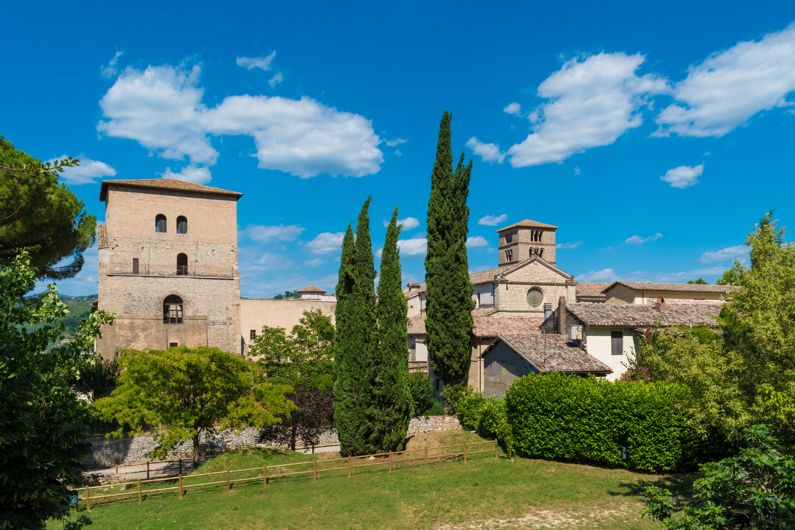
In 1547 the monastery became part of the Cassinese Congregration. Possibility of monastic hospitality, even for large groups.
The abbey grew in importance and consideration and received donations, privileges, exemptions from emperors and popes and thus became a real power interposed between the patrimony of Peter and the Duchy of Spoleto. Farfa was an imperial abbey, released from papal control, but very close to the Holy See, so much so that its abbot was the head of a suburbicarian diocese (the one currently merged into the suburbicarian seat of Sabina-Poggio Mirteto is only part of it , since it originally followed the Apennine orography until it touched the territories of the first papal territorial nucleus, the one that Liutprando obtained from the "Byzantine corridor" with the donation of Sutri).
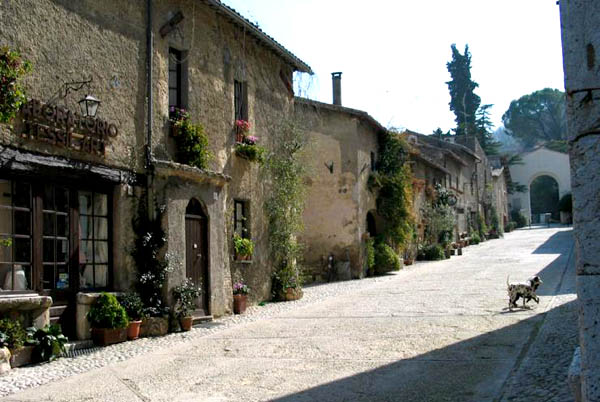
At the height of its power, the abbey controlled 600 churches and monasteries, 132 castles or strongholds and 6 fortified cities, for a total of more than 300 villages: it was said that the abbot overshadowed the power of the pope, but in in reality his power was that of a real imperial legate in charge of the defense of Lazio and the representation of imperial interests at the Holy See.

Cultured, worthy and devoted men succeeded one another in the direction of the abbey, such as the Abbot Sicardo, a relative of Charlemagne. During the reign of Charlemagne, the abbey experienced the maximum building development, which changed its original structure so much that it was only recently possible to rebuild it. In a few decades it became one of the best known and most prestigious centers of medieval Europe.
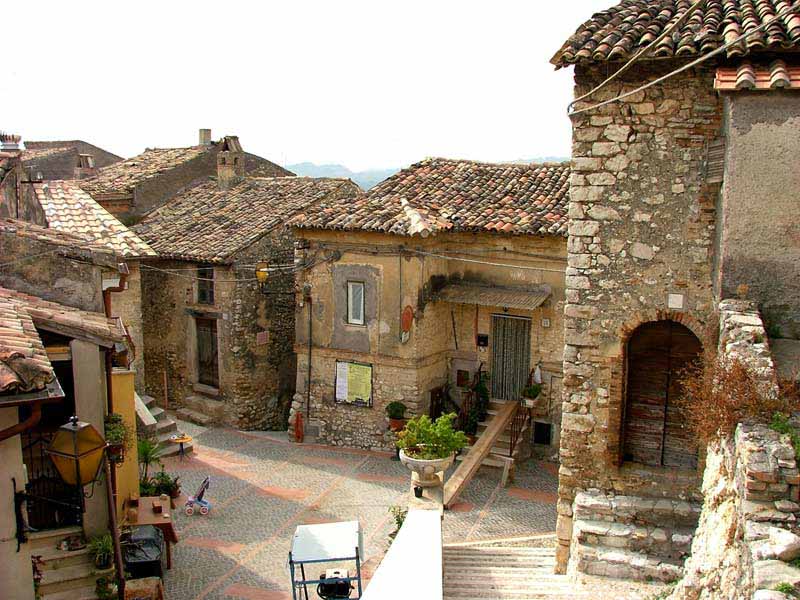
The abbey of Santa Maria di Farfa was founded between 560 and 570 by Lorenzo, bishop of Forum Novum (Vescovio). Charlemagne himself, a few weeks before being crowned in St. Peter's on 25 December 800, visited the abbey and stopped there. To understand the economic importance of Farfa just think that in the third decade of the ninth century, under the abbot Ingoaldo, it owned a commercial ship exempt from the duties of the Carolingian Empire ports.

Once the danger passed, the chapter returned to Farfa under the guidance of Ratfredo who, having become Abbot, completed the church in 913. With the decline of the Carolingian Empire, during the Ottomans the imperial fidelity of the abbey chapter - which in the meantime had embraced the Cluniac reform - was translated into pro-Germanism, which continued throughout the entire period of the investiture struggle. To substantiate the rights of his monks, the monk Gregorio di Catino edited the Regesto of Farfa, or Liber Gemniagraphus sive Cleronomialis Ecclesiae Farfensis composed of 1,324 documents, all very important for the history of Italian society in the eleventh century.

In 1103 Gregory wrote the Largitorium or Liber Notarius sive emphiteuticus, a long list of all the concessions, or subsidies, made by the monastery to its tenants. After gathering all this detailed information, he set to work on a history of the monastery, the Chronicon Farfense; and when he was 70 years old, in order to facilitate reference to his previous works, he compiled a sort of index in the style of "Liber Floriger Chartarum cenobii Farfensis". Gregory already in the eleventh century, wrote the history with precision, and a great wealth of information.
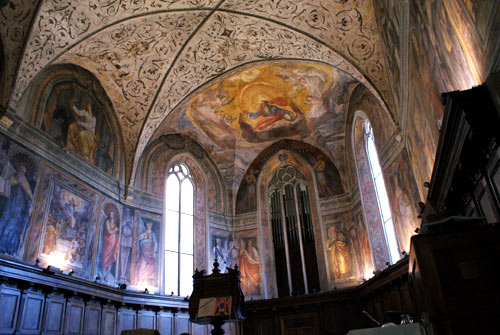
The monks of Farfa owned 683 churches or monastic communities; two cities (Civitavecchia and Alatri); 132 castles; 16 fortresses; 7 ports; 8 mines; 14 villages; 82 mills; 315 villages. All this heritage was an obstacle to religious life once again between 1119 and 1125. Farfa was troubled by the rivalries between the abbot Guido and the monk Berard who aimed to be abbot.

During the investiture fight, Farfa was on the Ghibelline side. The monks issued an orthodoxa Defensio imperialis in support of the Ghibelline party. The collection of canonical texts contained in the Regesto seems to deliberately omit any mention of the canonical texts of the reforming popes of the eleventh century but, in 1268, the victory of the popes over Corradin of Swabia put an end to Germanic rule in Italy.

Under the direction of Cardinal Alessandro Farnese, the monastery entered the Cassinese Congregation in 1547. Over the course of the following two centuries, despite some restorations and new constructions, Farfa lost all importance. In 1861 part of the assets were sold to private citizens. Count Giuseppe Volpi donated property and some land to the monastery. In 1920 a group of monks sent by Alfredo Ildefonso Schuster, then abbot of the Abbey of San Paolo Fuori le Mura in Rome (attached to the Basilica of San Paolo Fuori le Mura), gave a new life to the Abbey of Farfa.
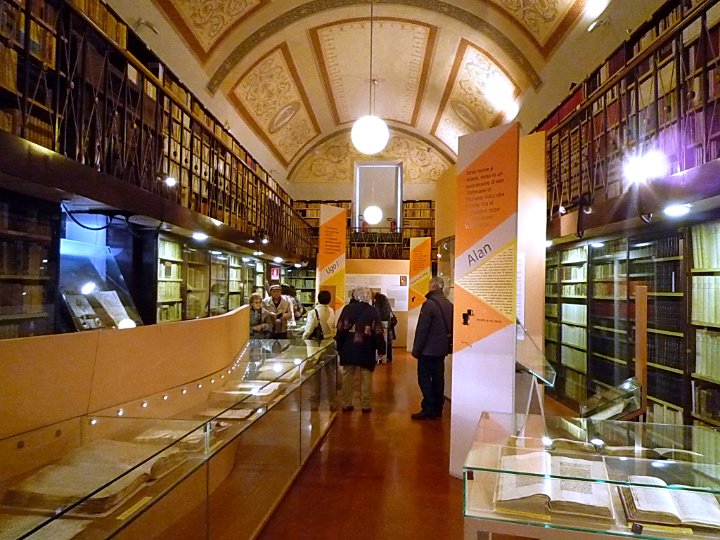
In 1928 Farfa was declared a national monument.
Video: Benedictine Abbey of Santa Maria of Farfa
Map: Benedictine Abbey of Santa Maria of Farfa
Address: Via del Monastero, 1, 02032
Castelnuovo di Farfa (RI) Lazio
Latitude: 42.2213856
Longitude: 12.7181581
Site: http://www.abbaziadifarfa.it/...
vCard created by: Pierpaolo Dori
Currently owned by: 1224815540898055
Type: Building
Function: Monastery
Creation date:
Last update: 21/10/2022
vCard Value: $4,00
vCard Views: 2612